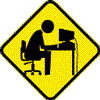If Windows XP (or 2000) refuses to start, press F8 right after you turn on your PC but before the Windows log-on appears (it may take a few attempts to get the timing right). At the resulting menu, select Last Known Good Configuration to restore your Registry to an earlier date.
If this doesn't get your PC working, reboot and press F8 again, but this time select Safe Mode, and then choose Start, All Programs, Accessories, System Tools, System Restore. Follow the wizard's instructions and pick an appropriate backup.
If that approach doesn't work either, or if you can't even get to this menu, use your emergency boot floppy. If your hard drive's boot sector or Windows' basic boot files have been corrupted, this disk will circumvent the problem and boot you into Windows. If you don't have an emergency boot floppy, you may be able to use one created on another PC running Windows XP or Windows 2000, but there's no guarantee that it will boot your machine.
To make one, insert a blank floppy disk into drive A:, select Start, All Programs, Accessories, Command Prompt, type format a:, and press Enter. When asked if you want to format another disk, type n and press Enter. Type the following commands, pressing Enter after each one.
xcopy c:\boot.ini a: /h xcopy c:\ntdetect.com a: /h xcopy c:\ntldr a: /h
Now type exit and press Enter to close the window. Remove the floppy disk and label it "Windows XP boot floppy." Put this emergency disk in the floppy drive of your inoperable machine and boot up. Windows should run with no problems. You could simply keep the floppy in the drive all the time, but to truly fix the problem, launch the command prompt as described above, type xcopy a:*.* c:\ /h, and press Enter.
If the emergency boot floppy doesn't work, try the Recovery Console, a Windows utility that provides a DOS-like command line from which you can run some repair programs. It's tricky to use if you're not accustomed to command lines, and you can damage your data, so be careful.
If you have a Microsoft Windows CD-ROM, you can get to the Recovery Console by booting from that CD and pressing any key when you're told to 'Press any key to boot from CD'. At the 'Welcome to Setup' screen, press r for Repair.
If Windows XP or 2000 came with your computer and you don't have a Microsoft Windows CD-ROM, the Recovery Console might be on one of the CDs the vendor bundled with your PC. But it might not. Fortunately, the Recovery Console is hidden in a free, downloadable Microsoft program called Setup Disks for Floppy Boot Install. Visit Microsoft's site to download the setup-disk file that works with XP Professional; available too is the XP Home version, which will also work for Windows 2000, Me, and 98. ...get them
hereWhen you run the download, it puts the XP installation program, including the Recovery Console, onto a set of six floppy disks. To get to the Recovery Console, boot from the first floppy, and then swap disks as prompted until you reach the 'Welcome to Setup' screen. Press r to open the Recovery Console.
Figure 1 below shows a list of the Recovery Console's most useful commands. For detailed information on a particular command, type the command followed by a space and /?, as in chkdsk /?. (Not all the commands will be available if you don't have a Windows CD-ROM.)
Figure 1: Recovery Console Commands
Command Function
Chkdsk1 Checks disks for errors.
Diskpart Creates and deletes partitions.
Extract2 Extracts files from compressed.cab archives.
Fixboot Writes a new boot sector.
Fixmbr Writes a new master boot record.
Help Lists the Recovery Console commands.
Footnotes:
1 If you load the Recovery Console from floppy disks, chkdsk may complain that it can't locate autochk.exe. When it asks for that file's location, point it to c:\windows\system32.
2 Extract is not available if you load the Recovery Console from floppy
Edited by happyrck, 11 January 2008 - 10:42 AM.
















 Sign In
Sign In Create Account
Create Account

